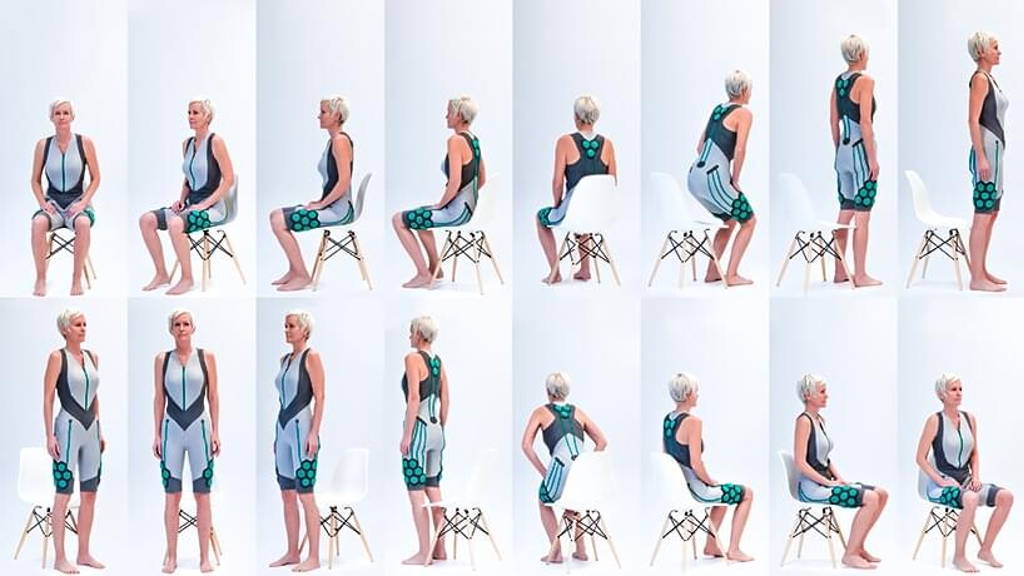With the elderly making up a large part of the society, it’s no wonder they are becoming an interesting target group for many companies and designers. Most of them focus on the tasks in and around the house. There is, however, another interesting challenge: mobility outside the home. Yves Béhar and Superflex hope to have found the solution to this challenge with the Aura Powered Suit; a wearable which reacts to the body’s natural movements. They unveiled their suit at London design museum’s exhibition NEW OLD.
The final suit should weigh less than three pounds and hide the necessary technology within. And with this suit, mobility outside the home should be in reach for most elderly.
Second supportive skin
Motors, sensors and artificial intelligence are at the core of the design of the lightweight suit. Using these, small ‘muscles’ are able to provide support to the user when standing up, sitting down or balancing — in short: general mobility. It does so meeting the needs of the individual wearer. An origami like fabric allows the suit to grow of shrink whenever necessary, which makes movements organic instead of robotic. By supporting the wearers main muscle points, it provides necessary support whilst maximizing ergonomics.Hardware pods
Since comfort is of an especially high priority while designing for the elderly, the hard technology components such as motors, batteries and control boards are designed into hexagonal pods. The pods are placed onto fabric with origami-like shapes. This allows the wearer to move around, during which the hardware expands, contracts and moves in sync with them. The system is modular and thus adaptable to different users. To make life a little easier; the hardware pods are removable so the suit can be cleaned.Good grip, soft fabric
All this hardware isn’t laced into the suit for nothing; it helps people move around. To do this, the suit has to grip the wearer’s body, but still remain comfortable. A V-shaped band is the solution for this problem. This V-shape holds tightly around certain points on the body, to create lumbar support. It provides support for the user’s torso, hips and legs. The combination of soft fabric and good grip should make the garment easily adoptable for daily use by the elderly.The final suit should weigh less than three pounds and hide the necessary technology within. And with this suit, mobility outside the home should be in reach for most elderly.






